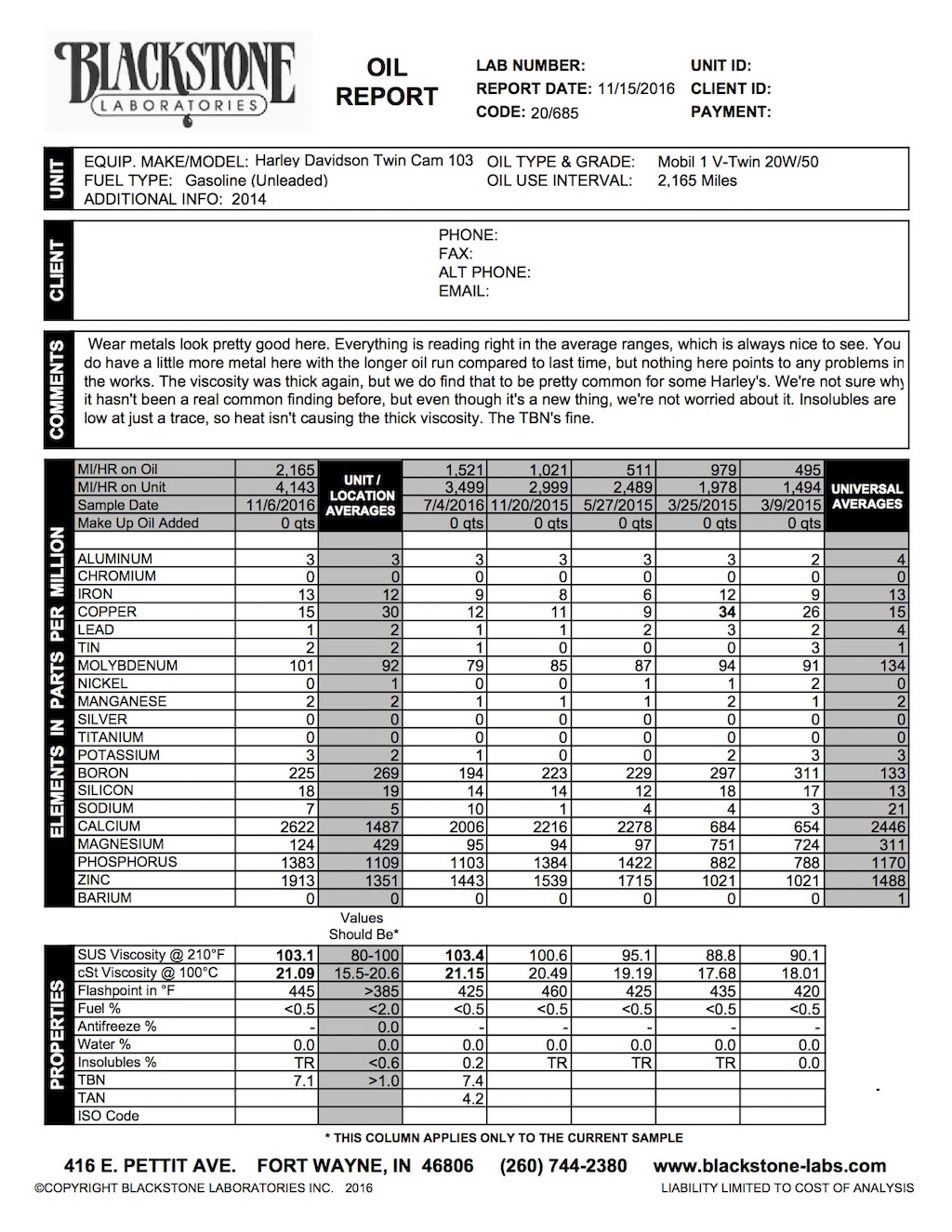The oil viscosity didnt shear, it rose.
Over the years, Mobile 1 and Amsoil have been known to increase in viscosity in some Harleys.
Why is anyones guess, wear numbers are always good but yes, you would think the oil is oxidizing. Both oils have been known to have similar traits. One is worse then the other but forgot which.
Is it possible these oils are designed like this, so when used in shared sump bikes the end user does not see as much viscosity shear and transmission shifting would stay good.
Yet when used in a non shared sump, this possible "built in" thickening/oxidizing (or whatever) slowly thickens up out of grade in non shared sumps. I think that maybe plausible but have no idea.


